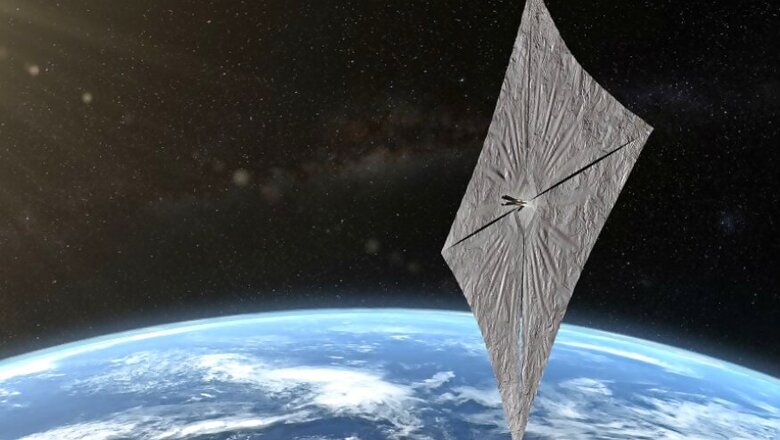
views
A small crowd-funded satellite promoted by TV host and science educator Bill Nye has been propelled into a higher orbit using only the force of sunlight blowing against its sail in space, a novel propulsion developers say could “democratize” spaceflight. The Lightsail 2 spacecraft, roughly the size of a loaf of bread, was launched into orbit in June and unfurled a tin foil-like solar sail designed to steer and push the spacecraft, using the momentum of tiny particles of light called photons emanating from the sun, into a higher orbit.
The satellite was developed by the California-based space research and education non-profit group the Planetary Society, whose chief executive is the television personality popularly known as Bill Nye the Science Guy. The technology promises a virtually inexhaustible source of space propulsion as a substitute for finite supplies of rocket fuels that the current generation of spacecraft rely on to maneuver in flight. “We are thrilled to declare mission success for Lightsail 2,” program manager Bruce Betts said Wednesday on a call convened with reporters to reveal that the spacecraft had raised its own orbit by 1 mile, sailing under the pressure of light beams from the sun.
Flight by light, or “sailing on sunbeams,” as Bill Nye said, could best be used for missions carrying cargo in space or on small satellites with enough room for deploying larger, and thus more powerful, solar sails. Other applications include monitoring solar radiation that interferes with Earth-bound communication networks. The solar sail technology could also reduce the need for expensive, cumbersome rocket propellants and slash the cost of navigating small satellites in space. “We strongly feel that missions like Lightsail 2 will democratize space, enable more people, more organizations around the world to send spacecraft to exciting and remarkable destinations in the solar system that will lead us to answer that deep question: ‘Where did we all come from?’” Nye said.
The Lightsail project kicked off in the 1990s, but its first planned prototype, Cosmos 1, was destroyed during a faulty launch on a Russian rocket taking off from a submarine in 2005. The Planetary Society got its the next prototype, Lightsail 1, into space in 2015, but technical problems kept it from climbing high enough to be steered by sunlight. Lightsail 2 became the latest spacecraft to demonstrate space-bound solar sailing after Japan’s experimental IKAROS spacecraft in 2010. The Lightsail project grew from an idea imagined by the society’s co-founders — executive director Louis Friedman and late astronomer and author Carl Sagan — to send a solar sail craft to rendezvous with Halley’s Comet in the 1970s.



















Comments
0 comment